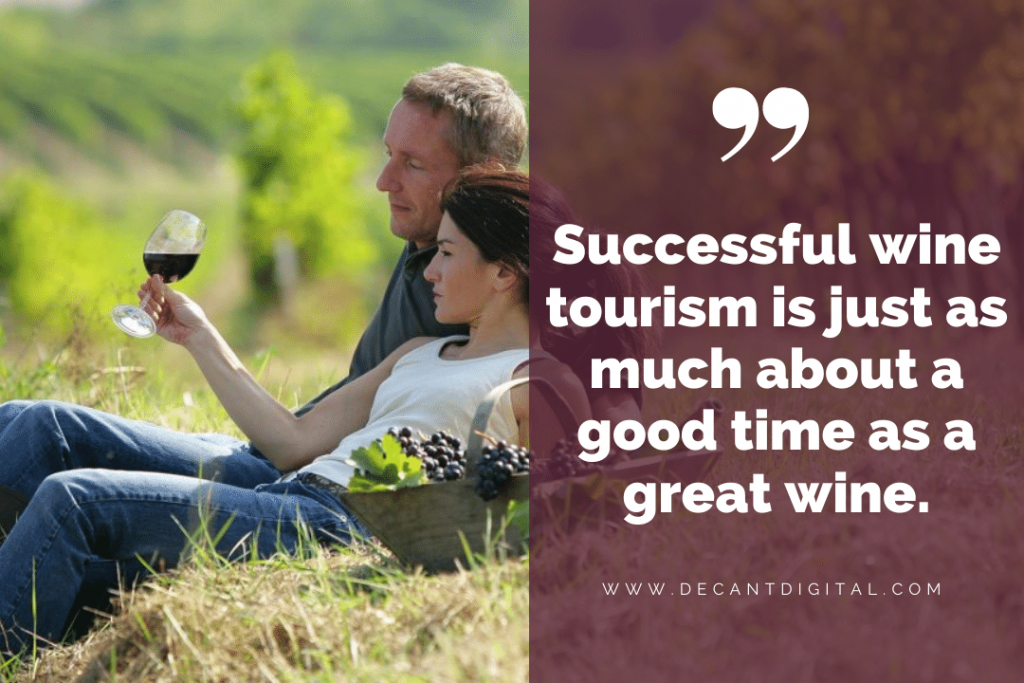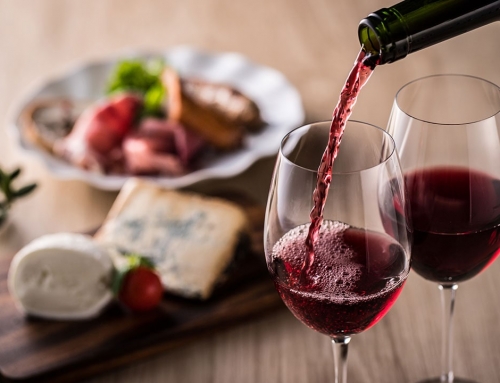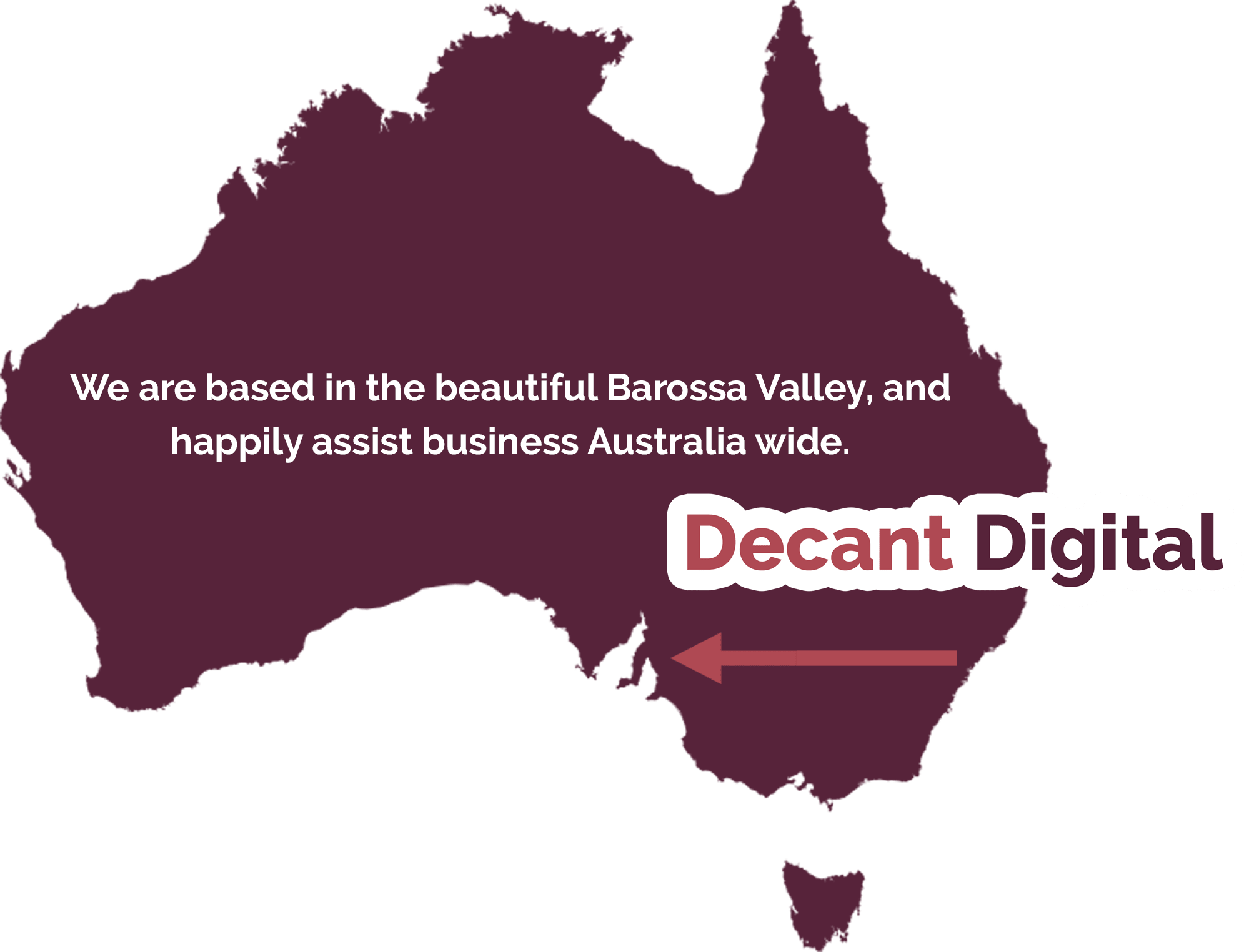What is DTC and Why is it Relevant
Direct-to-Consumer (DTC) in the wine industry is by no means a new concept as the model of building a direct, close relationship between winery and consumer is the basis of growing tasting room sales.
Even with rapidly evolving technology, changing consumer wants and needs, plus pretty much the dissemination of tourism in 2020 thanks to COVID-19, the tasting room still remains the pivotal component within the three main DTC wine sales methods:
- tasting room
- wine club
- and eCommerce (online shop)
Understanding the wine consumer journey and offering unique memorable experiences at each of these three touch-points represents an obvious and effective way to both sell wine as well as grow profits.
Ensure Optimal DTC Sales with a Strong Online Presence
Thanks to digital technology, your winery has more opportunities than ever before to connect with your consumer and be top of mind with an effective marketing plan.
But sadly, many still struggle with the online component of DTC wine sales.
Mistaken in their belief that focusing on eCommerce is not as important as tasting room sales.
When in reality, research shows that more and more people are buying alcohol from websites, with online sales consistently growing.
This upward trend is only set to continue as consumer habits change, influenced by culinary tourism and technology.
Still not convinced?
According to Wine Australia’s 2018 Cellar Door & Direct to Consumer survey, Cellar Door sales on average 75% of cellar door visitors purchase wine and the 2021 Cellar Door & Direct to Consumer survey reports the Cellar door was still the largest channel, with 44 per cent share of DTC sales revenue (even with COVID-19 travel restrictions!)
But what about those that don’t purchase at your cellar door?
Are you offering them opportunities to purchase in future or are you just letting them forget you?
Is there an easy way to capture future sales and upsell to your tasting room guests?
Of course!
This is where the online sales, or eCommerce shop and wine club component comes into play.
Wine Tourism is a Growth Industry
Wine tourism refers to tourism whose purpose includes the tasting, consumption or purchase of wine near the source.
This includes:
- Visits to wineries & vineyards
- Restaurants known to offer unique vintages
- Organised wine tours
- Wine festivals or other special events
In South Australia alone (our home state), wine is a key draw card for our international visitors, with 34% visiting wine regions whilst a tourist in the state. (SATC April 2018).
There are 200 cellar doors within an hour’s drive of Adelaide, which is just the beginning of South Australia’s wine narrative.
Wine tourism is increasingly an important source of revenue both directly and indirectly.
It contributes to the growth of on-site sales and hitting short term revenue targets. But perhaps more importantly it is also a long term project for a winery to engage in building a brand and establishing a relationship with customers.

It is all about giving people a memorable and personal experience.
Something to remember – whether it is in the physical sense with a bottle of wine, or an emotional connection.
Keeping all of this in mind, here are three tactics you can use to increase DTC wine sales in 2021.
1. Increase Offerings at your Cellar Door
Wine Australia’s 2018 Cellar Door and Direct to Consumer research survey noted nearly 90% of wineries in Australia have a cellar door and this channel accounts for up to half of all DTC sales across the different winery size categories.
Wine tasting is still by far the most common activity at a winery – for sound business reasons.
After all, tasting is a multi-sensory activity.
And by involving multiple senses, you involve and engage, rather than simply show and tell. Which in turn activates a physical, emotional and mental response.
Astute winery owners know that food and tour options generate significant volumes of visitors, and most importantly, drive increases in overall yield per visitor.
Honing in on this area is worth strong consideration, as unique food and wine experiences are still a relatively untapped opportunity for increased turnover and business diversification.
WHAT TO DO
Explore how you can upgrade your cellar door offering with something more personal or memorable than a standard tasting.
By adding high calibre experiences to your wine room, you not only educate your customer but inspire a long-term, loyal and profitable relationship with them.
Demystify the perfect match
How often have you heard a customer say they’re not sure what food to pair their wine with? Take the guessing out of it for them with a delicious food and wine event.
You can educate all attending on pairing principles and increase their confidence to match wine to their meals more regularly.
Do more than simply taste
Educate your visitor’s palate and increase their wine vocabulary, to engage them further and help them identify more easily what they like and don’t like. And want to buy more of!
Provide specific educational tasting exercises – whether it’s tasting the same wine from two or more vintages, highlighting the difference between oaked & unoaked, or discovering the difference in price points.
Winemaker for a day
Offer your customer the unique opportunity to be part of the magic – through vineyard tours, in-depth winery tours, blending classes or being hands-on in a particular part of the process.
Not only does this increase the consumers knowledge of how their favourite wines are made, but the connection created is sure to further enhance their loyalty to your brand.
Create more reasons to engage
Special events make for a great drawcard, whether they showcase local chefs, sommeliers or the perfect musical accompaniment to your wine. Or do you have premium collections or rare bottles of a particular vintage to promote?
Consider what other unique events, promotions or packages can you utilise to draw a crowd.
2. Audit and Fix your Website
In 2021, it is extremely likely that your customer has already checked out your cellar door online before they visit you in person.
As such, having an inconsistent, outdated or even incorrect online presence can be enormously damaging.
Don’t make the common mistake of creating your website and then forgetting about it until it’s necessary to upload your new wines.
A website is always a Work In Progress and at the absolute least, spend time on your website once a quarter to complete some basic administration.
Even more so, see your website as an extension of your cellar door and ensure it consistently reflects your marketing and sales strategies.
Remember your website works harder than your cellar door – your website is actually the hardest working member of your team working 24/7/365.
WHAT TO DO
Whether you choose to audit your website yourself or would rather utilise our Website Audit services, here are some questions to ask:
- Can consumers find your website in the crowded online space? Are you ranking for your relevant keywords?
- Is your site mobile-friendly (responsive)? How does it look across all devices? Remember that the majority of people now access your website from platforms other than a computer.
- How does your site appear from the perspective of a first-time visitor? And a repeat customer?
- Is your Online Wine Store easy to use? Does your website prompt visitors to action?
- Are all purchases made in an secure environment?
- Have you made your sales funnel as short as possible? The more steps there are, the more likely customers are to abandon their purchase.
- Do all of your pages load quickly and easily? Do all of your links work?
- Is your site up-to-date? This includes stock for sale, marketing activities, your About Us section and other business news.
- Is your site copy easy to read?
- Will your website cultivate loyal brand ambassadors and generate repeat sales?
If you don’t feel that your website is working hard enough as a powerful inbound marketing machine and as a sales tool, check out how we can assist with providing a comprehensive Website Audit report or with a customised winery website build.
3. Grow your Email List/Wine Club
One of the most effective ways to drive both brand awareness and online sales is email marketing.
But how can you do that if you don’t collect emails from your customers?!
If you fall into this category, put it high on your list for 2021 to devise a plan for increasing the number of email addresses you capture in your tasting room and at any events you hold.
Because it’s time to embrace email marketing as a serious DTC sales tool.
It generates a thriving database of wine enthusiasts who know, like and trust your wine brand and actually want to purchase your wines.
And if you need more ideas about what to then do with your email list, visit our blog about automation emails.
HOW TO DO IT
To increase the emails you collect, you will need to give your customers a reason to part with their address and participate in this “permission-based marketing”.
Here are our top 8 ways to ethically source more email addresses:
- At the cellar door – Either paper based or electronic sign-up forms will work with every wine sale or tasting. An extension of this is using any receipts you email to the customer as an easy and non-intrusive way to grow your database.
- Form in with their order – In case you missed their email in the tasting room, pop in a sign-up reminder form with the wines you ship to them.
- Events – Signing up customers at events is a powerful lead magnet because your customer has made a strong connection with your brand.
- Sign up on your website – If your prospective customer has found your website, make it super easy for them to sign up for content and wine offers with a simple opt-in form on your website.
- Pop-up forms – These can be as subtle or as intrusive as you wish. There are so many options available now, from full page pop-ups to the discreet as-you-exit pop-ups and everything in between.
- Facebook – Integrate your email service provider’s sign-up form on your winery Facebook page or use Facebook’s Call-To-Action button.
- Sign up link in your email signature – It’s business savvy to have a standard format for employee email signatures. And including a sign up option in this is a great way to grow your database.
- Offer an upsell or something of value in exchange for an email – There’s no reason this can’t work both on and off line. But make sure you automate the welecome email to ensure it arrives and customers don’t lose any trust in your brand!
PRO TIP – However your customer signs up to your email database or wine club, do ensure their request integrates seamlessly with your email service provider such as Mailchimp, Aweber or Constant Contact.
And if you’re considering making email automation campaigns a part of your own wine marketing strategy, then you may want to consider downloading our Ultimate Email Marketing Pack.
Build and Maintain Close and Meaningful DTC Relationships
Remember, that while the tasting room is crucial to your DTC wine sales, your DTC arsenal includes:
- tasting room
- wine club, and
- eCommerce (online shop).
And you want to maximise your opportunities in all three areas to in turn increase your profits.





Leave A Comment